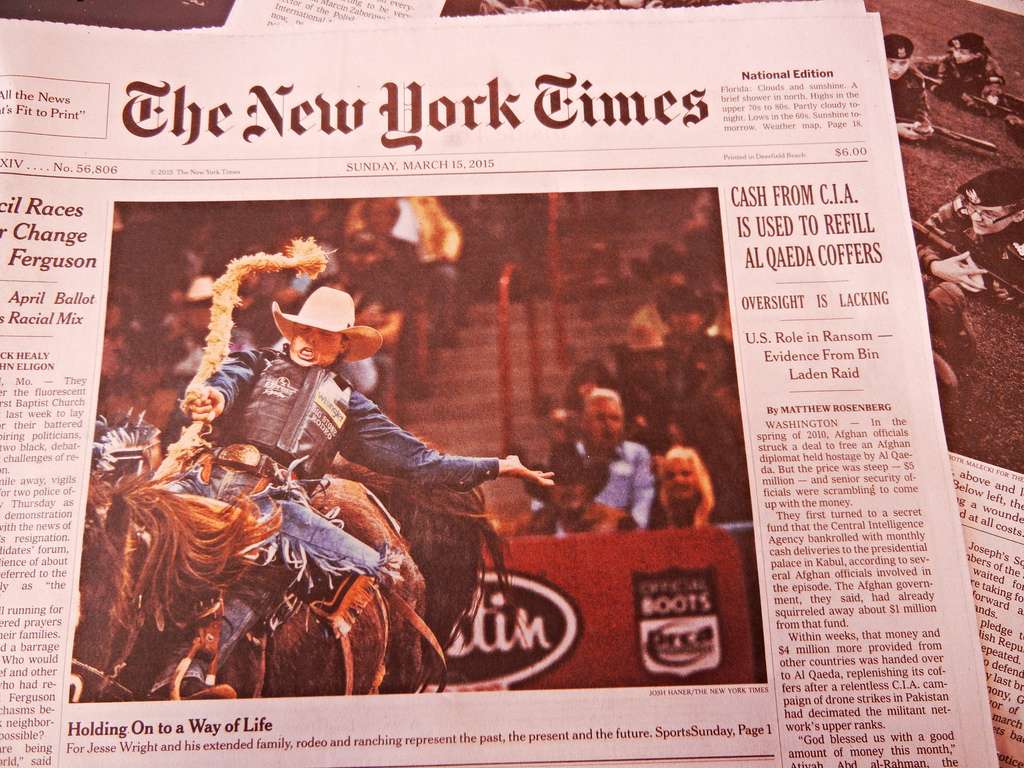The New York Times Complains of Drug Price Hikes While Raising Its Own Subscription Fees
The freedom to set prices free of government coercion makes for better newspapers and better medicine.


Sunday's New York Times editorial faulting pharmaceutical companies for pushing medicine prices "to astronomical heights for no reason other than the desire of drug makers to maximize profits" arrived less than a week after an email from the newspaper notifying me that it would be raising the fee it charges me to receive the paper. That seven-day-a-week home-delivery subscription to The New York Times in Boston, where I live, will now cost $977.60 a year, by my calculation. (The Times prefers to talk about the cost by the week—$18.80 a week—so that it sounds like less money.) To my mind, it is just as "astronomical" as the drug prices the Times is assailing.
At least the drugs can cure headaches, heartburn, or high blood pressure. Reading the Times may put otherwise healthy individuals at risk of those ailments.
Comparing the Times' arguments about medicine prices to my own arguments—and doubtless those of many other customers—about newspaper prices can help point out not only the Times' hypocrisy, but also the flaws in the paper's argument.
Start with the issue of motive. Long-suffering Times shareholders (I was one for a while, but gave up and sold years ago) might wish their own management had a more intense focus on maximizing profit, because there haven't been many profits for Times Company shareholders over the recent stretch. They would have done much better investing in pharmaceutical company stocks.
It may be easy for the Ochs-Sulzbergers to turn up their nose at profits. They inherited vast family wealth, and they are somewhat insulated from market discipline by a two-class share system that vests control of the company in a family trust that is difficult to dissolve. In the part of capitalism where management isn't protected by family trusts—the part that includes much of the drug industry—the responsibility to maximize profits is not so cavalierly dismissed.
The Times editorial complains that "Major drug companies often increase prices 10 percent or more a year, far faster than inflation, straining the health care system." My Times home delivery price is going up 6 percent this year, which is also far faster than inflation, at least as it is measured by the consumer price index fiat currency yardstick that the Times economic coverage usually favors. Over the past four years, it is up 17 percent, by my calculations, also more than inflation. (The Times says it has been raising home-delivery prices by about 5 percent a year and that it's also giving print subscribers more digital access.)
The single-copy newsstand price of a newspaper during the week has also jumped—to $2.50 in 2012 from 60 cents in 1999.
The Times proposes to deal with medicine prices by "allowing the government to negotiate lower prices." Imagine the outcry at the Times if the Trump or Cruz or George W. Bush administration announced that it was going to negotiate sharply lower prices for newspaper subscribers. What's the difference between the government "negotiating" prices and just plain setting or dictating them, as it did under Communism, or the Nixon administration?
A senior vice president of The New York Times, Eileen Murphy, responded to my query on the matter by calling my suggestion of a parallel between drug and newspaper prices "ridiculous."
"You're comparing drug prices—in many cases drugs that are necessary to keep people alive—to the price of a print newspaper (not news, as you say). While newspapers are certainly vital to a democratic system, if someone was unable to afford one, it is highly unlikely that this could lead to a decline in health or death. The same can't be said about the rising price of drugs used to treat heart conditions or cancer," she said.
Murphy also noted that the price of a single copy of the Times has not increased since 2012, and that the prices of digital subscriptions "have remained unchanged since launch in 2011."
The point she is making—that companies price different products at different levels—also applies to the pharmaceutical industry. The retail list "price" the Times editorial quotes for the drugs may sound high, but the out-of-pocket cost to a patient is usually much lower. Health insurance companies and pharmacy benefits managers negotiate lower prices. Thanks to President George W. Bush, there is now a prescription drug benefit as part of Medicare. The Medicaid insurance for the poor covers many prescription drug costs.
Even as the Times was raising the price it charges me to $977.60 a year, it was emailing me (at my college alumni address, which ends in .edu), a promotion for a special "academic sales rate" of "four weeks free, then $1 a week." Companies raise prices to maximize profits but they also sometimes lower them.
Anyway, the reason I keep plunking down the nearly $1,000 a year is that to me the Times is pretty much as necessary as medicine. The information—after adjusting for the left-wing tilt—is useful to me. Any substitute—free news or opinions from a computer—is not adequate for my needs. Sure, past a certain price I would stop paying and take the extra time to go read the paper in a library or coffee shop, which, fair enough, one cannot do with medicine.
Here is the key point the Times editorialists and so many others weighing in on the drug price issue seem to have missed. I am glad to live in a country where prices are mostly set freely by willing buyers and sellers in voluntary transactions, rather than one where the prices for necessary goods—medicine or newspapers—are "negotiated" by the government. That freedom makes for better newspapers and better medicine.


Show Comments (20)